IT’S A THURSDAY MORNING when Dr. Ashley Reeves receives the text. A research veterinarian with The East Foundation, Reeves has been awake for a while now, her equipment prepared for a rush out the door. As her eyes scan the message, she feels a familiar surge of excitement. “I’ve been doing this for about five years,” she says. “We trap for five months in a row, and to get an ocelot is incredibly rare.”
Not only has her research team trapped an ocelot, but it’s a female, which tend to be more risk-averse than males and are more difficult to trap for studying.
As Reeves drives toward El Sauz Ranch, a working cattle ranch owned by The East Foundation in Texas’ Rio Grande Valley, trained technicians set up a pop-up tent and tables in a clearing surrounded by dense Tamaulipan thornforests — the biodiverse woody scrub native to south Texas and northeastern Mexico.
The ocelot awaits Reeves’ arrival in one of 50 traps the team has set. The cat’s fur, a mix of gold and cream, is covered in dark stripes, spots and rosettes, markings as unique to her as a human fingerprint.

Photo Credit: The East Foundation
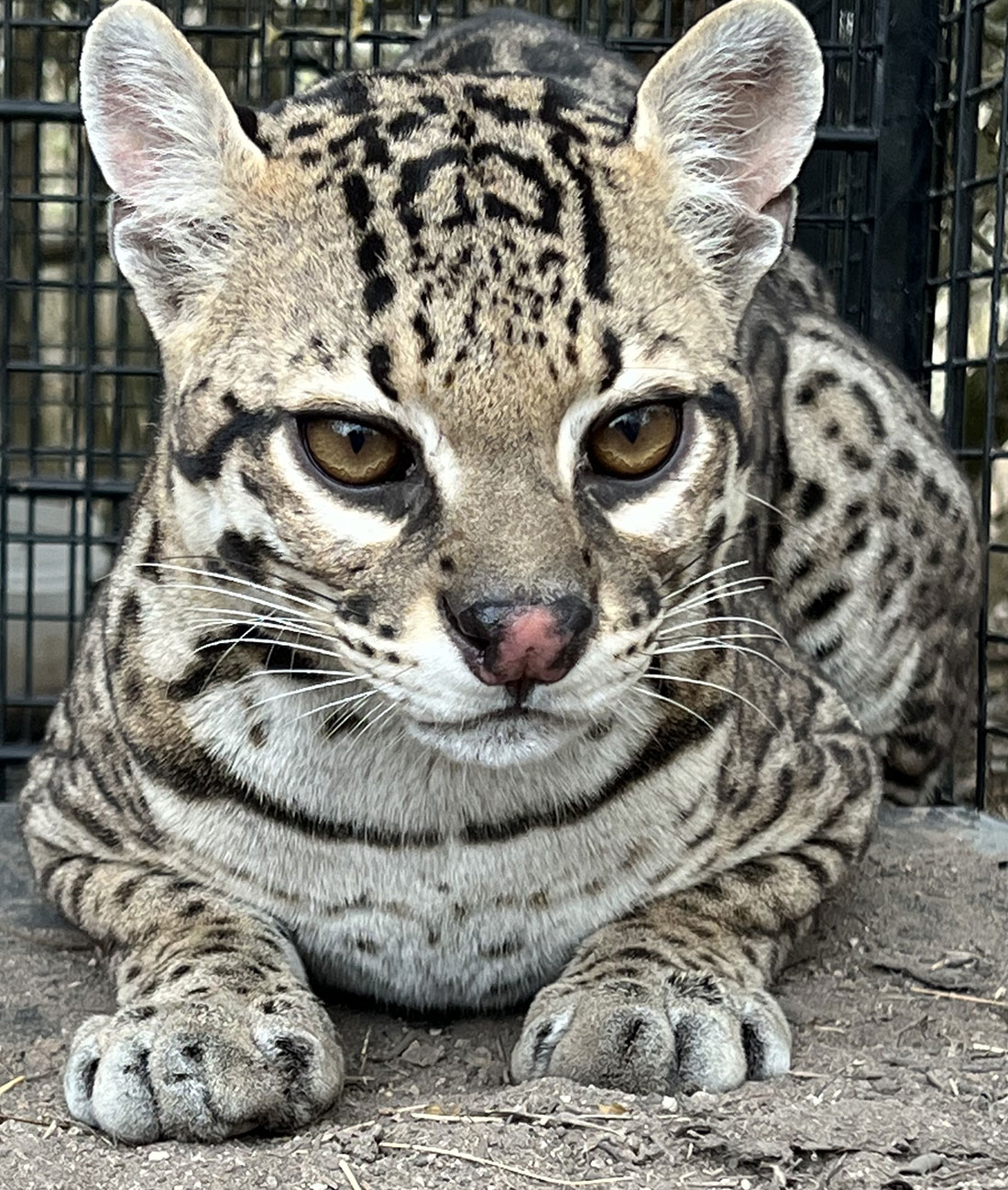
Photo Credit: Aidan Branney
Reeves and the team of technicians and graduate students prepare their equipment, then sedate the cat.
Working swiftly, they take her weight and measurements and then collect blood, hair, stool, flea and tick samples. A scan for a microchip reveals this ocelot is a familiar face, trapped for the first time a year ago when she was 2 or 3 years old and just approaching reproductive maturity. Today, an ultrasound confirms the cat is not pregnant, yet she has swollen mammary glands that secrete milk and have been recently suckled, reason to believe she has kittens hidden in a den somewhere among the thorns.
This hidden litter is likely the ocelot’s first. It’s a boon for Reeves and the host of scientists and land managers who have been collaborating for decades to recover this endangered species. Through the help of a GPS collar, the researchers will be able to collect data on how she moves among the thornforest with her brood and understand the environmental factors that impact their survival. It’s also an opportunity to understand how the size, spacing and plant composition of thornforest habitat can be restored to better accommodate ocelots.
“Once she abandons that den when the kittens are old enough, our research team will be able to go back and really assess what kind of den sites they prefer and what they like to put their kittens in to hide them,” Reeves says.
STUDYING THE PULSE OF RESTORATION
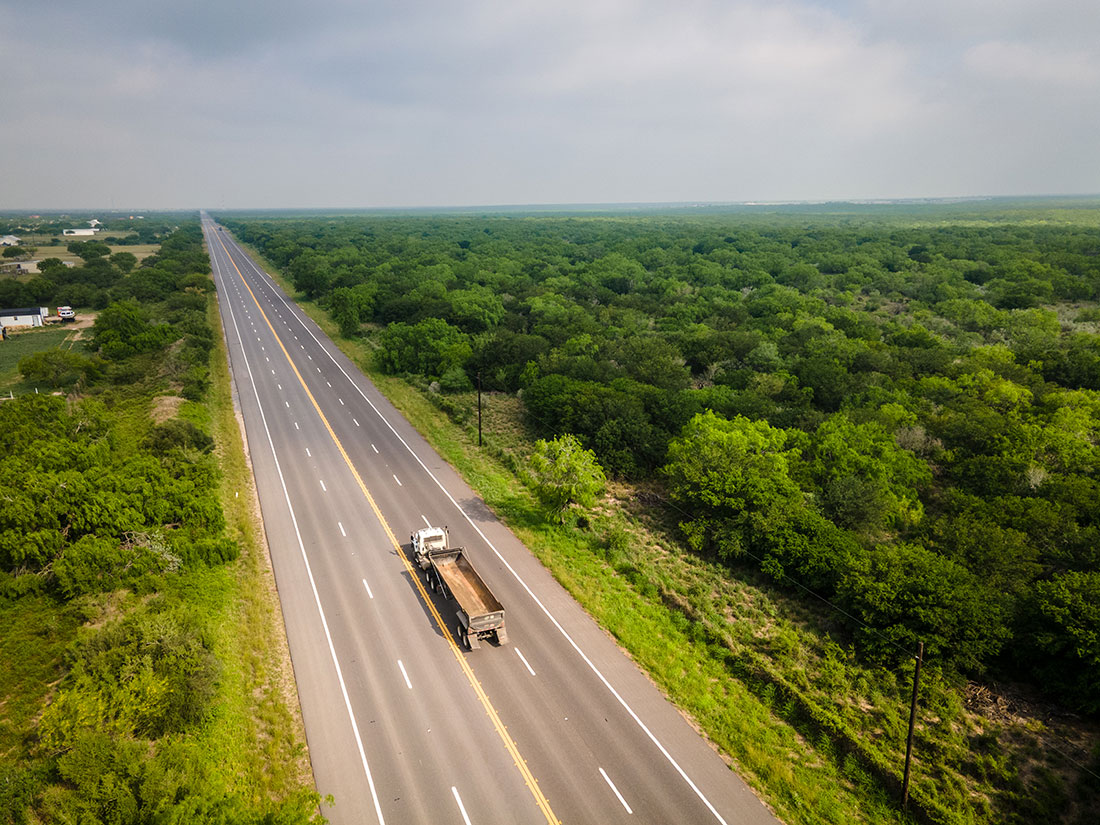
Photo Credit: Abel Riojas / American Forests
The thornforest habitat that ocelots and many other species rely on once sprawled throughout the Valley, providing shelter, pools of water and ample prey. Today, less than 10% of pre-1930s thornforests remain. The native forests have been fragmented by agricultural, commercial and residential development. Roads have bisected once-continuous swaths of land, and cars are a regular hazard to wildlife. Lawns now cover the grooves of former wetlands, and tall royal palm trees have replaced the spikey thickets of native forest.
Dr. Bradley Christoffersen, associate professor at the University of Texas Rio Grande Valley, is working to change the trajectory of this vital ecosystem.
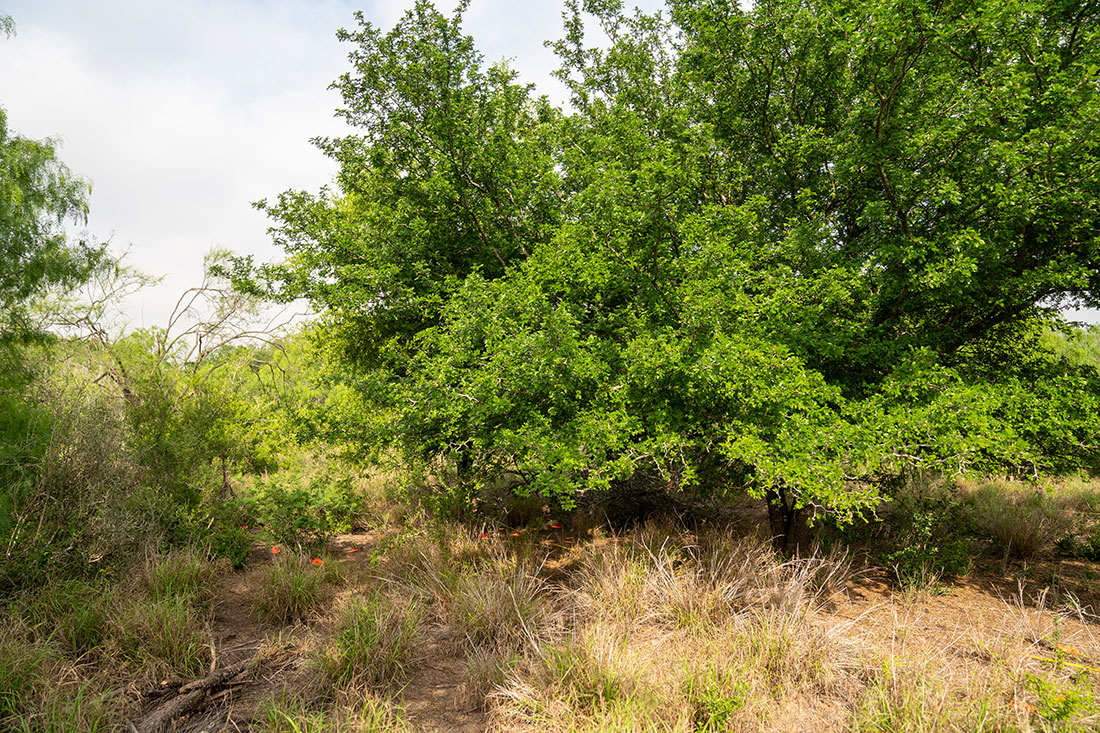
Photo Credit: Abel Riojas / American Forests
Miles away from the hidden ocelot litter, in an open landscape punctuated by the occasional mesquite or persimmon tree, Christoffersen gazes up at a large Texas ebony. Its thick branches, covered in dense, dark-green foliage, gesture at the slow-growing forest around it.
Christoffersen estimates that about 100 trees were planted per acre here when the U.S. Fish and Wildlife Service returned thornforest seedlings to the land in 1996.
Under the canopy of the Texas ebony, orange flags mark the presence of seedlings that have sprung up since that initial planting. The flags become more numerous the closer they get to the underbelly of the Texas ebony. The spot is shady, offering the seedlings moisture, protection from the sun and nitrogen. Like many other legumes, Texas ebony is able to remove nitrogen from the air through the use of microbes in its roots. The nitrogen incorporates into its stems and leaves, which nourish the soil for nearby plants.
Catarina Miranda, a graduate student in Christoffersen’s lab, has set up a plot here to monitor how seedlings naturally establish in the wake of human-assisted restoration. She and Lance Santos, another student in the lab, crouch down under the Texas ebony, looking for newly germinated seedlings, which they measure to estimate for age, log into their records and then tag.
“There’s a group of species that tend to occur here,” Miranda says. “I’ve pretty much memorized all of them.”
Christoffersen and the graduate students believe the nitrogen-fixing Texas ebony may nurse other native plants, helping them establish on lands being converted back into thornforests. By studying sites that have been planted years apart, the researchers are able to glean information about the ecology of thornforests and the variables they need to reestablish and thrive. Their research on nurse trees like the Texas ebony may inform future restoration methods, in which planting could ostensibly occur in waves of succession.
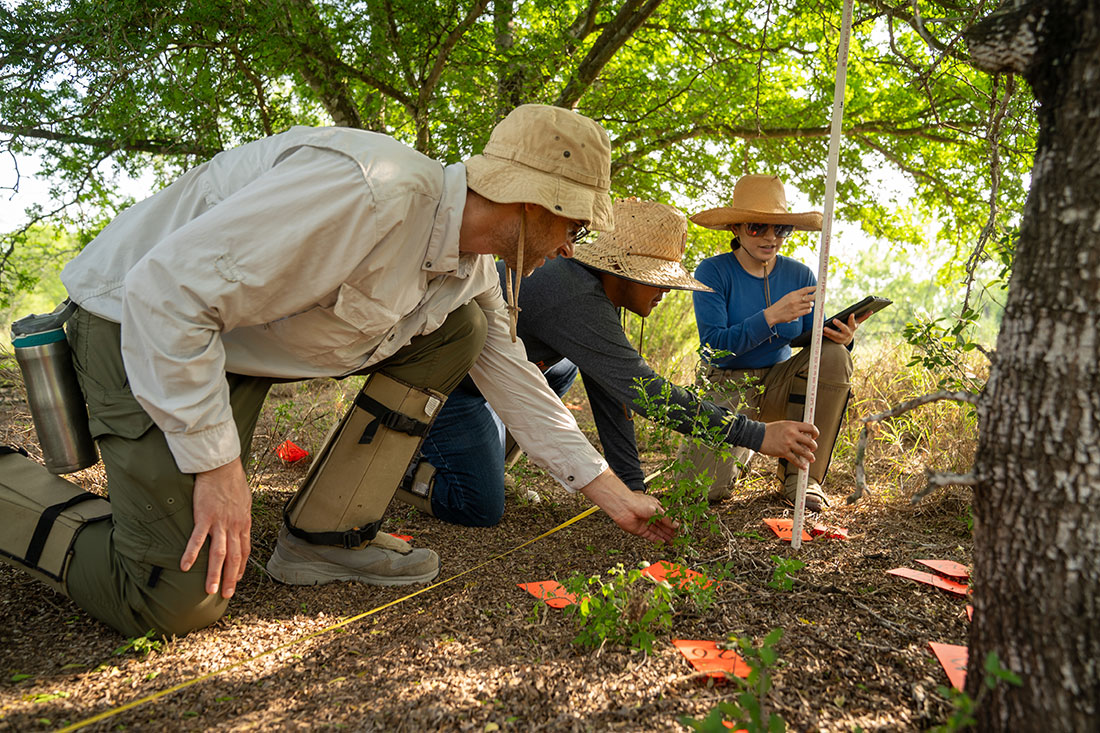
Photo Credit: Abel Riojas / American Forests
“Just because a species is found here, doesn’t mean it should go into the ground at the very beginning of reforestation,” Christoffersen says. “There might be certain species that are better suited for those earlier stages, and then potentially a second stage of planting.”
In this way, Christoffersen and his team study the pulse of restoration and the extent to which a forest can sustain itself long after humans have intervened.
A PLAN TO RETURN CONNECTIVITY
Reeves and Christoffersen are among a growing group of researchers, land managers and nonprofits coordinating to return native forests to the Valley.
A $10 million contract from the Fish and Wildlife Service is supporting the many threads of these efforts. The contract, announced in September 2023, is administered by American Forests, which has been advancing reforestation in the region since 1997.
Guided by the Thornforest Conservation Plan, a conservation strategy developed by American Forests in collaboration with the Fish and Wildlife Service and partners throughout the region, the contract is directing funding toward research and restoration. A portion is also funding community education and engagement work.
The overall goal of the conservation plan and contract is to restore and reconnect habitat so plants and animals can once more move in natural ways and exchange their genetic material, creating more resilient populations.
“The optimal word there is connectivity. It’s about creating additional habitat for native populations, but also creating the kind of connectivity that will make these populations more robust genetically.”
— Jon Dale, American Forests’ director of Texas and Mexico
“So much thornforest habitat is fragmented,” says Gisel Garza, who leads American Forests’ wild seed collection efforts as the manager of Semillas Compartidas or “Shared Seeds” initiative. “We want to create corridors between thornforest remnants for wildlife.”
Movement through a connected habitat is especially critical for ocelots. Researchers believe there are only 80 to 100 ocelots remaining in the United States, all of which are located in the Rio Grande Valley. Most of those live in two populations along the coastline at Laguna Atascosa National Wildlife Refuge, which is managed by the Fish and Wildlife Service and El Sauz Ranch. The populations are separated by 20 miles of hostile, developed lands that limit their ability to mingle.
“Animals can make it, but oftentimes they go in the wrong direction, and when they go in the right direction, they are killed by cars or other sources of fatality,” says Dr. Lisanne Petracca, assistant professor of carnivore ecology who oversees the Caesar Kleberg Wildlife Research Institute’s collaborative ocelot research with The East Foundation through Texas A&M University-Kingsville.
Without the range to find suitable partners, ocelots have resorted to inbreeding. According to Reeves, this can significantly impact their overall population health, increasing the likelihood of mutations and disease, and lowering their ability to reproduce.
To increase ocelots’ genetic diversity, Reeves is working to inseminate females in zoos with sperm from trapped wild males. The hope is to create future generations that can be released into the wild.
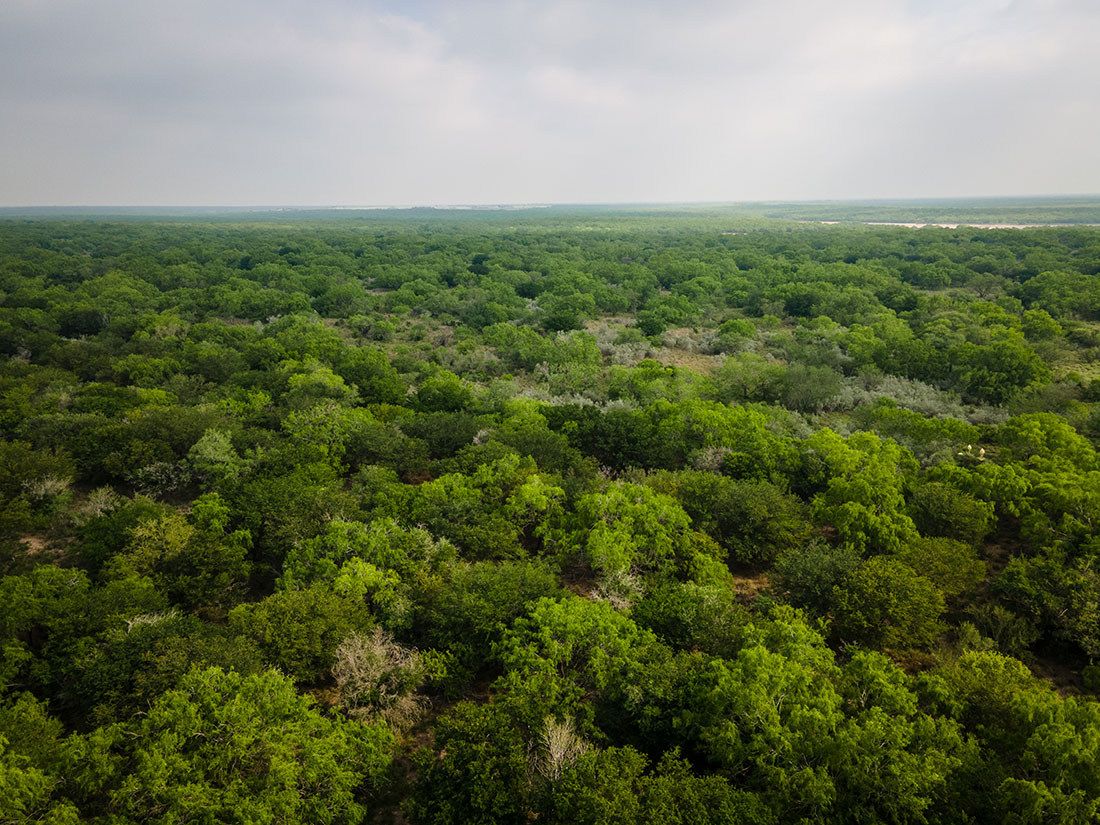
Photo Credit: Abel Riojas / American Forests
“If they can’t connect themselves, we may need to help connect them,” Reeves says. Still, the creation of habitat corridors remains paramount for long-term recovery of ocelots and thornforest ecosystems.
“Species are comprised of populations,” Christoffersen says. “They depend on dispersal over broad distances to maintain themselves.”
When habitats are connected, pollinators are able to disperse seeds more widely, which helps the forest become more self-sustaining. And that in turn pollinates the numerous agricultural fields that helped earn the region its moniker of “the Magic Valley.”
Over the next three-and-a-half years, Christoffersen’s lab is supporting American Forests’ efforts to restore more than 800 acres of thornforests through the Fish and Wildlife Service contract. They are assisting with post-restoration monitoring, as well as investigating how various land management strategies, like removing invasive grasses, impact seedlings’ ability to survive. The research is helping to develop a model of what effective restoration looks like.
CULTIVATING SEEDLINGS AND PRIVATE PARTNERSHIPS
Around the Valley, there are about 81,000 acres of former thornforest lands with the potential for restoration. In order to meet this need and form connective habitat corridors, two things are certain — the initiative is going to require a lot more seedlings and more available land on which to plant them.
To build up the number of available seedlings, American Forests is contracting with local growers and expanding the capacity of Marinoff Nursery, the Fish and Wildlife Service’s nursery in Alamo, Texas.
“This year, we have eight outside growers helping American Forests grow native plant species from different regions of the Valley,” says Marisol Kuri, American Forests’ senior manager of Texas reforestation, who manages Marinoff Nursery on behalf of the Fish and Wildlife Service. “We are partnering with them so we can reach our goal of planting 1,000 trees per acre, which will enable the forest to increase cover for wildlife quickly.”
Most plants needed for restoration will come from Marinoff, where Kuri is leading efforts to update irrigation, add shading to growing areas and expand planting stations.
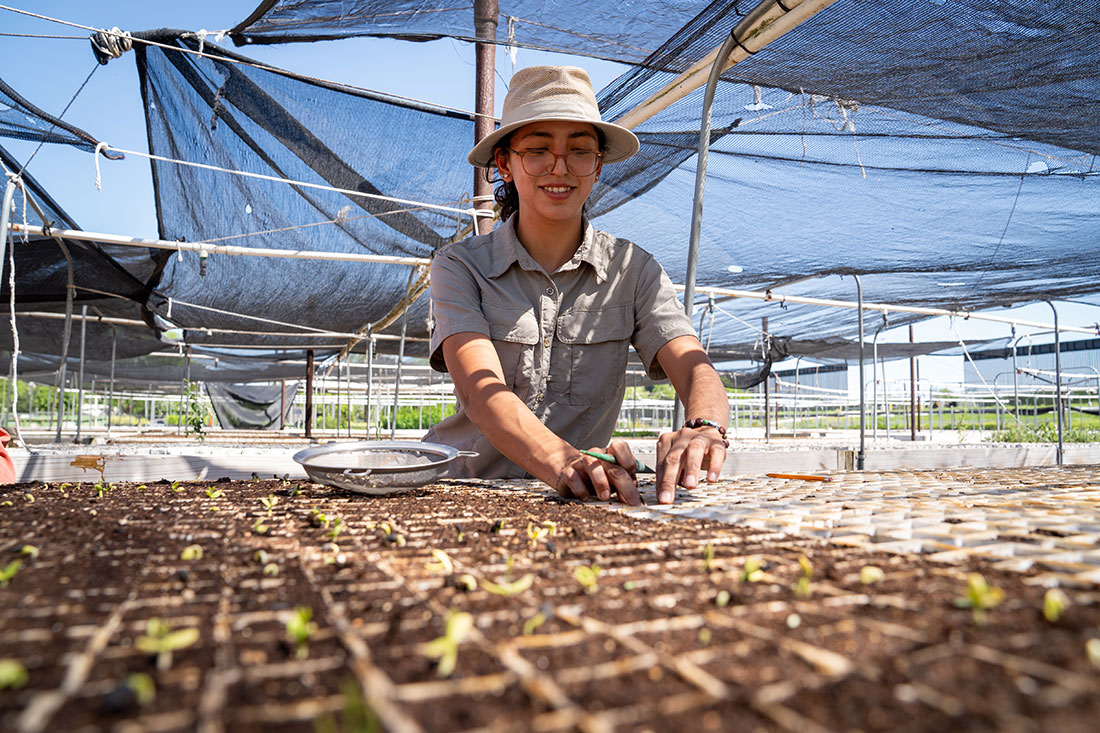
Photo Credit: Abel Riojas / American Forests
The new additions will enable the nursery to effectively double its capacity to be able to hold and grow 300,000 seedlings at any given time.
As for the land? Ask anyone involved in this issue and they’ll say that the private landowners who collectively hold more than 90% of the Valley’s land are an important part of the solution.
“Private lands and landowners are critical for wildlife conservation,” says David Hewitt, director of wildlife research with the Caesar Kleberg Institute. “This is especially true in Texas because nearly all wildlife habitat is on private land.”
Many of the working ranches and farms have abandoned fields or unused pastures ripe for reforestation. As Reeves points out, agricultural operations can coexist with thornforests, and even the ocelots and other animals that rely on them.
“You can raise other species of animals in the thornscrub,” she says. “While it might be unfortunate for humans to walk through, other species such as cattle and deer and turkeys and javelina do rely on those habitats as well. So it has benefit for many species, not just cats.”
Further, she notes that ocelots themselves have no known impact on livestock.
For some landowners, like Bradley Penick, the desire to be a part of thornforest conservation runs deep.
“I grew up in the thornscrub,” he says. “I grew up in South Texas near a very large ranch, and I basically ran wild there as a kid… I don’t know what it is about it, I just love it.”
About a year ago, Penick purchased a 250-acre ranch from a friend. The property has a mix of pastures and thornforests, some of which he estimates are at least 100 years old. He uses the land to raise about 25 cattle at a time. He also initially attempted to reforest the land on his own.
“I started buying trees,” he says. “I’d buy 10 here, 20 there, but then when I heard American Forests can plant 1,000 per acre, I realized I’m doing a very small part.”
Penick contacted American Forests, and soon he and Dale began developing plans to return thornforests to much of the property. They plan to irrigate the land to help their plantings establish themselves. Penick also hopes to add ponds that will collect rain and provide drinking water to wildlife.
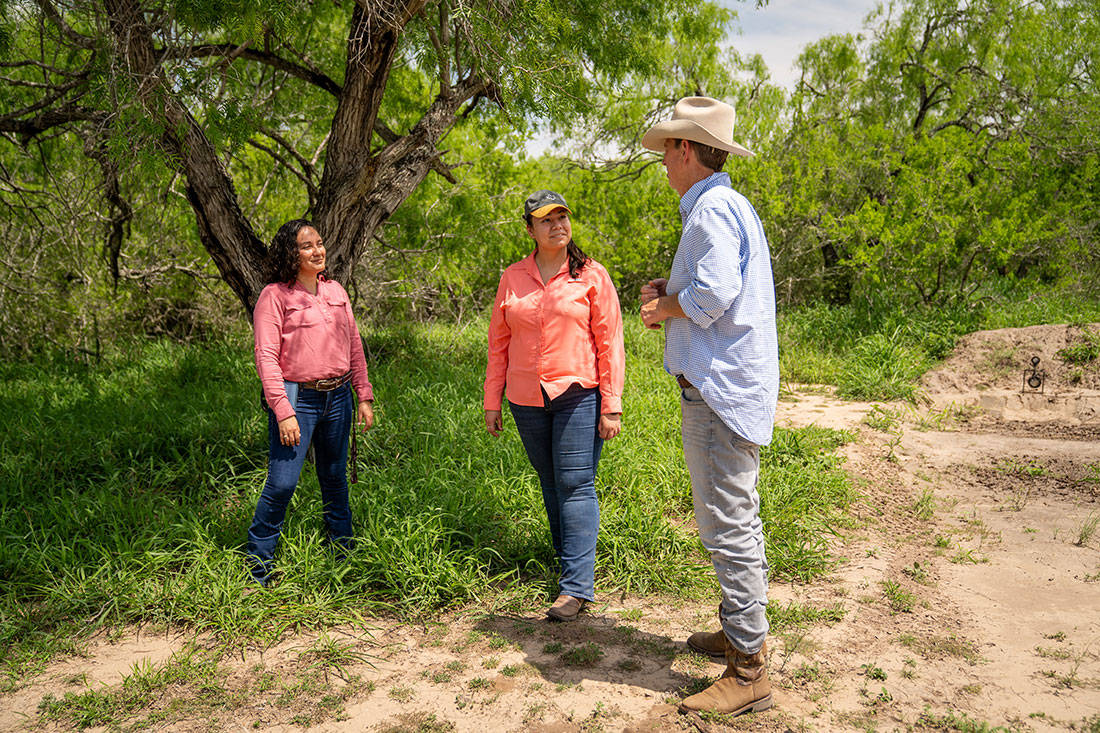
Photo Credit: Abel Riojas / American Forests
He brightens when he considers the prospect of supporting ocelots.
“I’m going to do everything I can to help them survive because it’s not easy,” he says. “I’m hoping to build a habitat that they’re comfortable in, and hopefully they can pass through my land without getting harmed. That’s the goal.”
A recent development called the Safe Harbor Agreement is making it easier for landowners like Penick to work with the Fish and Wildlife Service to recover threatened and endangered species on their properties without fear of restriction or penalty.
“It’s building that relationship with the landowner and being able to develop that trust,” says Laura de la Garza, ocelot species lead and wildlife biologist with the Fish and Wildlife Service. “We know they want to do the best for that species. And in turn, it’s about them trusting us to know we’re not there to take away their land. We’re just there to facilitate the recovery of the species that are there.”
The first Safe Harbor Agreement was signed March 19, 2024, with The East Foundation at El Sauz Ranch, where one of the two known ocelot populations reside and some of Reeves’ research has been taking place.
Landowners interested in future Safe Harbor Agreements will need to approach the Fish and Wildlife Service to qualify for the protections it provides. Three weeks in, de la Garza is already in conversations with two additional ranchers.
“We’d like to continue that conservation recovery with them, because that is going to be the key,” she says.
Dale believes this could be the beginning of a new era in private restoration partnerships.
“It will open the door for more landowners to come to us and say, ‘We’re interested in restoring our property,’” he says.
And as momentum continues to build in the Valley and one by one public and private landowners plant the seedlings that will return thornforest habitat anew, hopeful advocates have their eyes to the horizon.
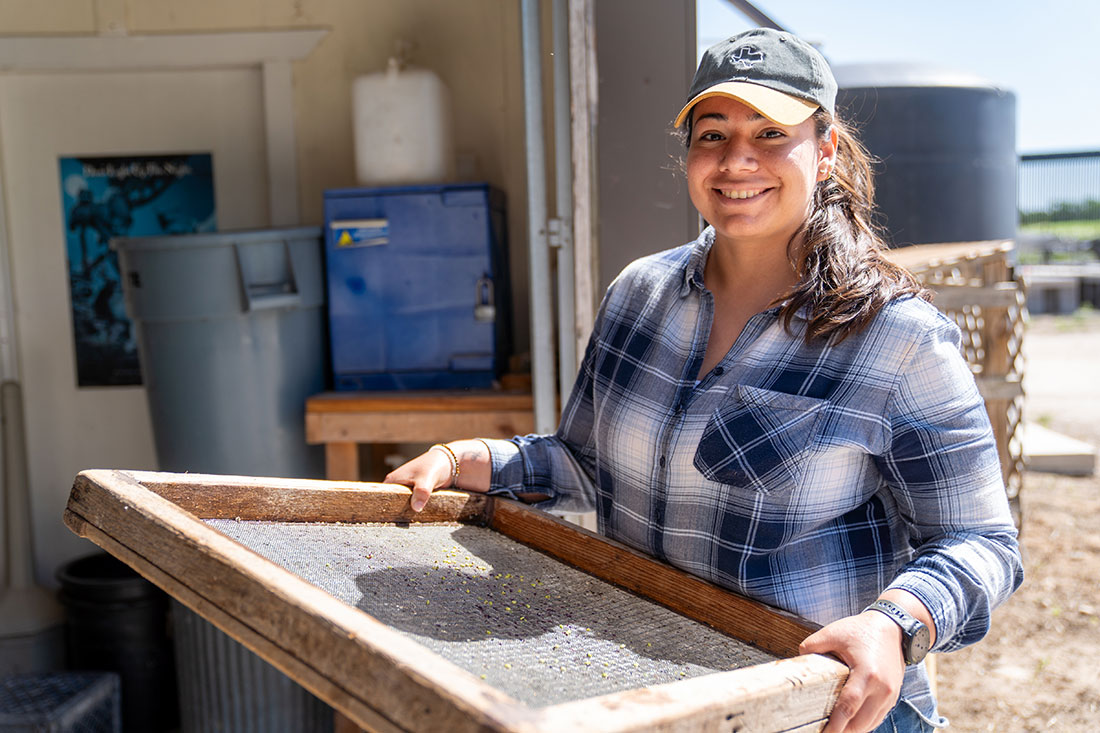
Photo Credit: Abel Riojas / American Forests
“My goal in my lifetime is that I see ocelots be removed from the Endangered Species List in the U.S. and that we create an ecosystem that can sustain them long past our lifetime,” Reeves says. “That is my ultimate goal.”
For Gisel Garza, it’s about the impact experienced by future generations.
“I hope to see a lot more thornforest over the years,” she says. “I hope that my grandchildren get to experience the thornforest ecosystem, and it won’t end with us but grow with us.”
Liane O’Neill writes from Portland, Ore., and serves as American Forests’ director of forest and climate change communications.